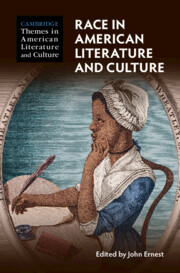Book contents
- Race in American Literature and Culture
- Cambridge Themes in American Literature and Culture
- Race in American Literature and Culture
- Copyright page
- Contents
- Contributors
- Acknowledgments
- Introduction
- Part I Fractured Foundations
- Part II Racial Citizenship
- Part III Contending Forces
- Chapter 7 Reconstructing Race
- Chapter 8 Out of the Silent South
- Chapter 9 Neighborliness, Race, and Nineteenth-Century Regional Fiction
- Part IV Reconfigurations
- Part V Envisioning Race
- Part VI Case Studies
- Part VII Reflections and Prospects
- Index
Chapter 8 - Out of the Silent South
White Southerners Writing Race during the Long Reconstruction
from Part III - Contending Forces
Published online by Cambridge University Press: 26 May 2022
- Race in American Literature and Culture
- Cambridge Themes in American Literature and Culture
- Race in American Literature and Culture
- Copyright page
- Contents
- Contributors
- Acknowledgments
- Introduction
- Part I Fractured Foundations
- Part II Racial Citizenship
- Part III Contending Forces
- Chapter 7 Reconstructing Race
- Chapter 8 Out of the Silent South
- Chapter 9 Neighborliness, Race, and Nineteenth-Century Regional Fiction
- Part IV Reconfigurations
- Part V Envisioning Race
- Part VI Case Studies
- Part VII Reflections and Prospects
- Index
Summary
After the U.S. Civil War, beginning near the end of Reconstruction, white writers of the South felt called to break what several of them referred to as the region’s “silence” in the aftermath of war and emancipation. What could the South, briefly a nation, now a devastated and transformed section, say for itself? Answering this question became the principal vocation of the region’s white literary establishment in the period between Reconstruction and World War I. Speaking for the South was not a new enterprise; antebellum white Southerners had done so volubly in poetry, fiction, and polemical prose. But the present task, making the South articulate in the aftermath of the Thirteenth, Fourteenth, and Fifteenth Amendments, imposed novel burdens on the region’s imaginative writers. Postbellum Southerners such as Irwin Russell, George Washington Cable, Thomas Nelson Page, and Thomas Dixon discovered that the South now needed two voices, represented as black and white, engaged in some kind of dialogue with one another over the South’s defining question, that of racial relations. This essay considers how these writers – though sometimes fiercely disagreeing with one another – summoned fictional black and white voices to engage their historical moment.
Keywords
- Type
- Chapter
- Information
- Race in American Literature and Culture , pp. 133 - 148Publisher: Cambridge University PressPrint publication year: 2022

